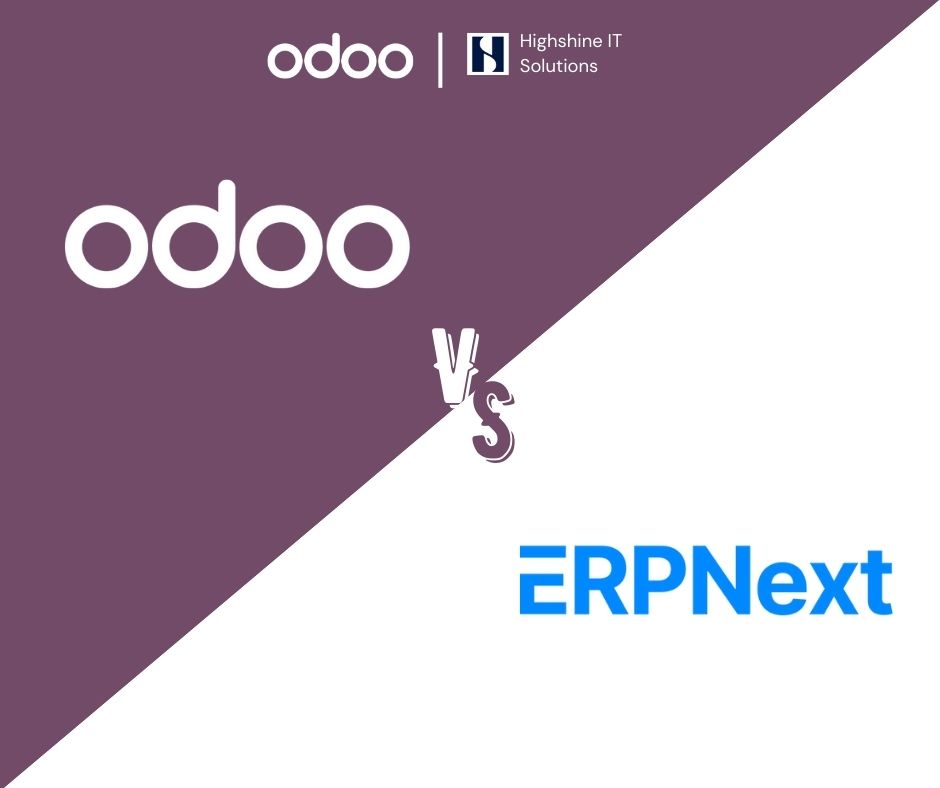
How Odoo Can Enhance Business Operations for E-Commerce Companies
Picture a busy e-commerce startup that is quickly gaining popularity. You, as founders, aren't from a background in tech but are visionaries in your field. The challenge is that you want to grow the business while keeping a close eye on consumer happiness.
But now you're stuck on how to make their processes more efficient while still keeping up with the daily needs of the business without getting too busy with manual chores. This is how Odoo helps you optimise your business processes.
E-commerce ERP systems like Odoo are like a Swiss army knife for your online business. This can help your business to be more efficient and gain a competitive edge by combining its powerful features with the needs of online stores. Let's look at how customised Odoo solutions can change the way you do business online.
For SMEs, online selling success takes more than beautiful product pages—it requires a single, automated engine for orders, inventory, fulfilment, accounting, and support. Too often, SMEs run on silos: the web store in one tool, accounting in another, and inventory in spreadsheets—which can lead to inefficiencies and is prone to errors.
Odoo fixes this issue by unifying e-commerce and ERP into one scalable backbone. You can launch a no-code shopfront with a drag-and-drop builder, manage rich catalogs (variants, categories, advanced filters), and keep real-time stock in sync across every sales channel to prevent overselling.
Odoo connects to major payment gateways (PayPal, Stripe, Adyen, Authorize.net, COD) and shippers (DHL, FedEx, UPS) for live rates, label printing, and automated tracking. It also supports promotions (discount codes, cross-sell, loyalty), SEO and mobile-friendly layouts, visual sales reports, an integrated blog, a customer portal for orders/invoices/returns, and embedded chat/chatbot/ticketing for support.
Where customization earns its keep is aligning this unified platform to your workflow—pricing rules, tax logic, multi-warehouse fulfillment, approval steps, service SLAs, or industry-specific data. Tailored Odoo modules and automations turn the standard toolkit into your Swiss-army-knife operating system for growth.
What a customized Odoo stack delivers for SMEs
Fewer errors, faster cycles: One dataset from “browse” to “balance sheet” cuts manual re-entry and exceptions.
Real-time inventory across channels prevents stockouts and cancellations.
Lower cost-to-serve: Automated pick/pack/ship, invoicing, and reconciliation trim overhead.
Happier customers: Self-service portal, proactive tracking, and responsive support.
Built-in scalability: Add products, channels, or warehouses without re-platforming.
In short, customized Odoo doesn’t just power your store—it orchestrates the entire order-to-cash lifecycle, so you can focus on winning customers, not wrestling systems.
Understanding Odoo Customization for E-Commerce
When you customise Odoo, you make the ERP system fit your specific e-commerce business needs, just like a well-fitted suit. It lets you add important features and operations that are necessary for online retail success.
Odoo provides a single platform that takes care of everything from running a website to automating marketing. It helps you optimise your end-to-end business processes and operations, thereby giving you better granular visibility. At HighShine, we understand your business processes and help you customise the platform to boost operational efficiency.
Here’s the detailed step-wise process for Odoo customisation.
Business Discovery
Learn what you sell, who buys, and where things slow down.
Pick a few numbers to improve (sales, delivery time, returns, support speed).
2) Map the Operations
Sketch the path from order to delivery (and returns).
List systems to connect (payments, couriers, POS/CRM).
Define products (sizes/colours), prices, taxes, and stock locations.
3) Set Up & Fit the Right Apps
Shopfront, inventory, accounts (manufacturing if needed).
Turn on payments (PayPal/Stripe/etc.) and shipping (DHL/FedEx/UPS).
Add simple rules and automations (reserve stock, send tracking, invoice on ship).
4) Build the Storefront
Clean, mobile-first design with quick checkout.
SEO basics and analytics connected.
The customer portal handles orders, invoices, and returns and is equipped with chat and helpdesk features.
5) Backend Process Integration
Link sales, inventory, fulfilment, accounting, and support.
Configure pick/pack/ship workflows, generate labels, and push tracking to customers.
Set event-driven notifications (email/SMS) for order status and exceptions.
End-to-end test flows (happy paths + edge cases: partial shipment, out-of-stock, payment failure).
6) Go Live & Train
Import your products, customers, prices, open orders, and current stock.
Practice on a safe test site, then switch on the real site.
Train each team (store, warehouse, finance, support) with simple how-to guides.
Post-launch support to fix any issues that occur.
7) Keep Improving
Watch key numbers (conversion, basket size, delivery time, stockouts, returns, and response time).
Tweak automations; add channels or locations as you grow; review quarterly.
What You Gain with HighShine + Odoo
One source of truth across store, stock, money, and support.
Fewer mistakes & faster work (no double entry, real-time stock).
Lower effort (labels, tracking, and invoices happen automatically).
Customers are happier due to clear tracking, easy returns, and quick responses.
Ready to scale without re-platforming.
Handy Automations
Reserve stock on payment; release on cancellation.
Nudge shoppers who left items in the cart.
Reorder bestsellers based on sales and supplier lead times.
Auto-invoice shipments and match payouts.
Returns with prepaid labels and portal updates.
The Advantages of Tailored ERP Solutions for Online Retail
The beauty of tailored ERP solutions lies in their adaptability. For e-commerce businesses, customisation means your ERP system grows with you, adapting to new challenges as they arise. A custom ERP implementation ensures your business processes are not only optimised but also future-ready.
Imagine having the flexibility to tweak your systems as new trends emerge, giving you a competitive edge by enhancing specific e-commerce processes. With features like Odoo Mail, even though not the most sophisticated, businesses can maintain smooth operations and focus on growth. Below are some of the specific use cases that HighShine helps you to customise.
Finance Workflows That Are Ready for the Future
Instant Invoicing: Odoo can automatically make and send the invoice as soon as an order ships. When you are busy with multiple different things, Odoo can help you automate manual and repetitive tasks.
Live Bookkeeping: Imagine having an AI agent as your accountant. Every sale, spend, or refund goes immediately into your books in real time. You won't have to do any manual imports or reconciliations; your cash flow picture will update itself.
Smart Error Alerts: Odoo can show you entries that don't fit with what you want. If a payment doesn't match an order, it will be highlighted in red so you can fix it before the month ends.
These Level 2 features lay the groundwork for your financial procedures to reduce man-hours in efforts that are not very complicated but still take up a lot of your time.
integrating AI into routine tasks using Odoo
AI-Driven Email Outreach: Instead of sending out generic cart-recovery emails, we use AI to customise your processes, like letting AI write and deliver personalised communications to each consumer based on their browsing and buying behaviour at the time they are most likely to click "buy".
Automatic Profitability Scans: Think of an AI procedure that checks the costs of each purchase—product, shipping rules, discounts—and lets you know if an order will actually lose money before you hit "Ship".
You go from doing things faster to smarter when you add these AI improvements to Odoo's built-in automation. You are not only automating your bills and bookkeeping; you are also enabling your ERP to monitor your margins and increase sales.
Steps to Implementing Odoo Customization in E-Commerce
Implementing Odoo customisations in your e-commerce business involves several key steps:
Identify Business Requirements: Conduct a due diligence process to understand the company’s operations, breaking down departments and key roles.
Assess Current Systems: Determine what’s existing and what’s missing in your current Odoo setup.
Plan and Execute: Implement the customised solution and provide access to your team.
Train Team Members: Ensure that everyone is familiar with the new system.
Customise Processes: Tailor the workflow in Odoo to optimise business processes, such as reducing time spent on tasks and minimising touchpoints.
Hypercare: Provide ongoing support to ensure smooth operation and address any issues promptly.
For mid-sized companies, partnerships with service providers like Highshine can ease the transition. We can help optimise business processes through business process optimisation, reducing errors and time spent on manual tasks.
Conclusion: Using Customised Odoo to Make E-Commerce Work
You can't just buy off-the-shelf software and expect it to work for your e-commerce business. You need to think about your specific problems and opportunities when you make it. That's exactly what we help you to do!
We help you to customise the platform so that you:
Quickly add new markets, distributors, or product lines without having to start over.
Uncover proactive intelligence, which turns simple automation into AI-driven insights that help you keep your margins and get your revenues back.
Take care of the boring jobs for your team so they can focus on strategy, new ideas, and making customers happy.
Whether you're just starting to look into ERP or you're ready to boost an existing setup with AI, custom Odoo development is the strategic lever that turns complexity into a competitive edge.
FAQs
Q1: What does it mean to customise Odoo?
A: It's the process of changing or adding to Odoo's basic modules—adding features, automating procedures, or making entirely new apps—so that the platform works flawlessly with your business policies and growth plans.
Q2: How can I determine what changes my business needs?
A: Start by making a list of your present problems (such as having to do invoices by hand or waiting too long for reconciliation) and your intended results (like getting real-time profit alerts). You may prioritise and deliver value quickly by using a tiered strategy, with Level 2 for core finance procedures and Level 3 for AI improvements.
Q3: Will changes stop working when Odoo updates?
A: If you use Odoo's suggested extension framework to build custom modules, your changes will still work after upgrades. A reliable partner will handle version control and testing to keep your system stable.
Q 4: How long does it usually take to customise something?
A: For e-commerce enterprises of medium scale, Level 2 financial workflows usually take 4 to 8 weeks to set up. It can take another 6 to 12 weeks to add AI-powered features (Level 3), depending on how complicated the data is and how much training the model needs.
Q5: How many returns on investment (ROI) can I expect from customising Odoo?
A: You save money by doing less manual work (invoicing and reconciliation can take 30–50% less time), making fewer mistakes, and making more sales through smart outreach.




